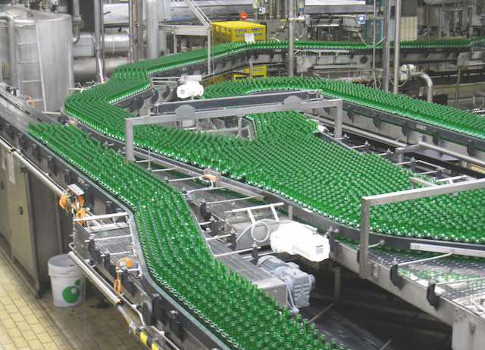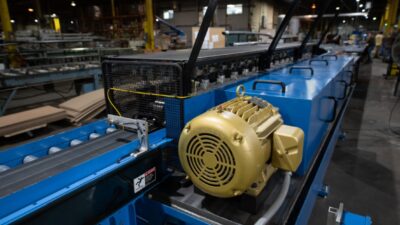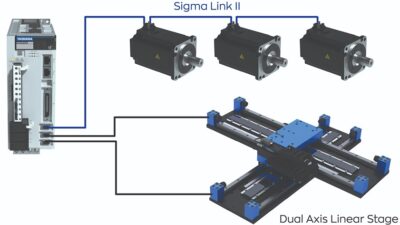Users looking to select a variable frequency drive (VFD) need to consider their application, power source characteristics, and other safety and maintenance aspects to ensure that a production plant’s operations remain smooth with minimal downtime.

Learning Objectives
- Users should select a variable frequency drive (VFD) that matches their application.
- Applications can be categorized as variable torque, constant torque, or constant horsepower.
- Users need to consider communication protocols and maintenance strategies when selecting a VFD.
Production plants need more automation control and increased production speeds. It is common for a variable frequency drive (VFD) to control three-phase motors in automated process plants as well as commercial buildings. It is important that users select a VFD that matches the needs of specific applications. VFD benefits include:
-
Variable speed
-
Improved process efficiency and control
-
Acceleration and deceleration control
-
Reduced demand and energy costs
-
Solid-state starting and reversing
-
Phase conversion.
Five questions to ask when selecting a VFD
Buyers and specifiers of VFDs should ask five questions before selecting a VFD for an application.
1. What is the application?
Applications can be categorized as one of three types:
-
Variable torque
-
Constant torque
-
Constant horsepower.
Reference tables in drive manufacturer catalogs and the internet can provide users with guidance on the torque and power characteristics required for specific applications. Table 1 provides a few examples of each of these types.
The most significant factor in this step is to match the load characteristic to the drive. The drive should be selected to meet or exceed the motor’s need for current in a steady-state average mode and overload, which is typical of a demanding start.
2. What are the VFD’s power source characteristics?
Once the application has been defined, the next step is to identify the input voltage, frequency, and power distribution configuration. In North America, the input is ac more often than not, but there are applications that require dc. Low-voltage input options typically will be 115 V ac, 208 to 230 V ac, 380 to 480 V ac, or 575 to 600 V ac, and can run as high as 690 V ac.
Typical input frequency ratings are 50 or 60 Hz. While this isn’t common, ac drives are specified to work from dc sources, which broaden the range for alternate technologies and more demanding system applications.
3. What enclosure is needed?
Ensuring a proper enclosure is critical because it increases the drive’s longevity and provides protection. Many drives are part of bigger automation platforms and have space reserved in clean, air-conditioned control rooms. This puts less ambient stress on the equipment. Chassis or minimally protected products are available from most drives’ manufacturers for just this purpose.
However, most individual motor controllers on their own in the field are subject to fluctuating conditions. Understanding where the drive will be installed is key to a long service life. UL or NEMA types 1, 12, and 4 represent most of the standard protection ratings that may be needed. Consider the settings highlighted in Table 2.
Operation outside these ranges is possible, and each drive manufacturer can provide derating factors to allow proper selection of a larger product for more demanding applications. Custom-engineered options also may be possible depending on the application.
4. Is the drive compatible with the process?
For this step, users, machine builders, and system integrators need to ask themselves two specific questions about the process:
Is feedback required? Define the demands and expectations for the motor in the applications. Many drive applications are considered process regulators rather than speed regulators. Embedded memory, faster processors, and input/outputs (I/Os) allow drives to control various processes. These might include a transducer wired into the drive to maintain a level in a vessel using a PID application or a winder application that uses several encoders controlling multiple drives to calculate correct diameters and speeds. Regardless of the process type or the signals being measured-pressure, flow, or temperature-they still are used to control the drive’s output to the motor.
What kind of communication is required? Communication is a key part of many applications. In some cases, a useful display that helps the operator affirm that the process is ready is all that is required. Other typical communications from the drive are analog and digital outputs. Or perhaps the user needs statistical data on the conditions controlled by the drive, which makes fieldbus communications a good option. Control from a data collection system (for building automation applications) is also possible.
5. What kind of service and support should be expected from the manufacturer?
First, look at product warranties for some measure of expected reliability. Warranties ranging from 18 months to two years are common, but warranties can extend to five years and beyond. It is important to remember that the electronics business is fluid, and there is no guarantee that a current purchase will be available in its exact form five years from now. The only certainties are that technology will continue to advance and functionality will increase.
Expert help in the area is valuable for installing and commissioning drives. A good phone support network and local/regional technicians are vital in maintaining a production line’s operations and keeping employees busy and comfortable. Easy serviceability and support can mean fewer productivity losses and reduced downtime.
The applications discussed are somewhat normalized for argument’s sake. Alternate selection criteria may apply in some cases. Most drive manufacturers can help identify these special cases and provide a customized drive when needed. Even then, the questions highlighted above can provide buyers and specifiers of VFDs with a solid foundation.
Tim Park, senior applications engineer, Danfoss. Edited by Chris Vavra, production editor, Control Engineering, CFE Media, [email protected].
MORE ADVICE
Consider this
What other questions should users ask when selecting a VFD?
ONLINE extra
Find more information from Danfoss about drives at www.danfoss.com/drives.
See links to related stories on VFDs below.



